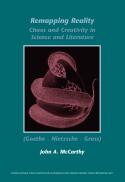Remapping Reality
 Remapping Reality: Chaos and Creativity in Science and Literature is about intersections among science, philosophy and literature. Author John McCarthy bridges the gap between the traditional “cultures” of science and the humanities by creating an area of interaction that some have called a “third culture.” By asking questions about three disciplines rather than about just two, as is customary in research, Remapping Reality breaks new ground in both philosophy and science. Rather than privileging one discipline over another, this study seeks to uncover a common ground for science, ethics, and literary creativity.
Remapping Reality: Chaos and Creativity in Science and Literature is about intersections among science, philosophy and literature. Author John McCarthy bridges the gap between the traditional “cultures” of science and the humanities by creating an area of interaction that some have called a “third culture.” By asking questions about three disciplines rather than about just two, as is customary in research, Remapping Reality breaks new ground in both philosophy and science. Rather than privileging one discipline over another, this study seeks to uncover a common ground for science, ethics, and literary creativity.
Remapping Reality seeks to answer three major questions:
1.) What impact has the remapping of reality in scientific terms (through thermodynamics, relativity theory, quantum mechanics) had on the way writers and thinkers conceptualize the place of human culture within existence?
2.) What influence, on the other hand, have writers and philosophers had on the doing of science and on scientific paradigms of the world?
3.) Where does humankind fit into the total picture with its uniquely moral nature?
Throughout this inquiry certain nodal points emerge to bond the argument cogently together and create new meaning. These anchor points are the notion of movement inherent in all forms of existence, the changing concepts of evil in the altered spaces of reality, and the creative impulse critical to the literary work of art as well as to the expanding universe. This ambitious undertaking is unified through its use of phenomena typical of chaos and complexity theory as so many leitmotifs. While they first emerged to explain natural phenomena at the quantum and cosmic levels, chaos and complexity are equally apt for explaining moral and aesthetic events. Hence, the title “Remapping Reality” extends to the reconfigurations of the three main spheres of human interaction: the physical, the ethical, and the aesthetic or creative.
©2025 Vanderbilt University ·
Site Development: University Web Communications